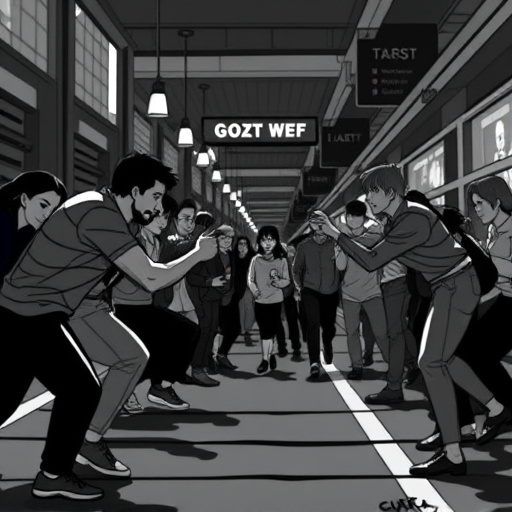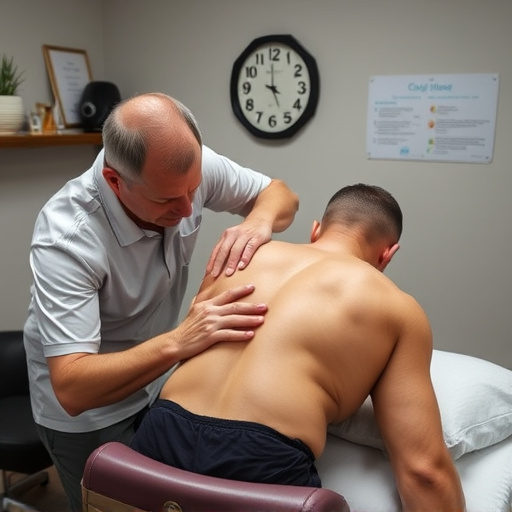An initial occupational injury assessment involves a thorough review of medical history, symptoms, and injury specifics to identify root causes. This leads to a personalized treatment plan combining therapies like physiotherapy, occupational therapy, and specialized techniques, focusing on pain management, function restoration, and risk mitigation for a safe return to work. Regular communication is key throughout the recovery process, which includes therapeutic exercises, manual therapy, and tailored pain strategies, with short-term goals for motion and long-term objectives for strength or adaptation.
“Navigating an occupational injury can be daunting, but understanding the treatment process is key to a swift recovery. This article guides you through the essential aspects of occupational injury treatment visits. From the initial assessment, where experts unravel the extent of your injury, to the tailored treatment plan encompassing therapies and interventions, each step plays a vital role in your healing journey. Moreover, we delve into the recovery process, highlighting milestones to track and expectations to manage.”
- Understanding the Initial Occupational Injury Assessment
- Treatment Plan: Therapies and Interventions Explained
- Recovery Process: Expectations and Milestones to Track
Understanding the Initial Occupational Injury Assessment

The initial occupational injury assessment is a crucial step in your journey to recovery. During this visit, your healthcare provider will thoroughly evaluate your condition by delving into your medical history, symptoms, and the specific nature of your occupational injury. They’ll assess your physical capabilities, range of motion, and identify areas of pain or weakness. This comprehensive evaluation helps tailor a treatment plan aligned with your unique needs.
Expect discussions around potential diagnostic methods such as imaging scans, and learning about conservative treatments that might include manual therapy like spinal adjustments or innovative approaches like shockwave therapy for pain relief. The goal is to gain insights into the root causes of your neck pain and develop an effective strategy for managing and mitigating further harm while promoting a safe return to work.
Treatment Plan: Therapies and Interventions Explained

During your occupational injury treatment visits, understanding the proposed treatment plan is crucial. The rehabilitation process often involves a combination of various therapies and interventions tailored to address the specific nature of the injury. Physiotherapy is a common approach aimed at improving strength, flexibility, and mobility, which can help in managing pain and restoring functional abilities, especially after an auto accident or sports injury. These sessions may include exercises, manual therapy, and education on proper body mechanics to prevent future injuries.
Additionally, other therapies like occupational therapy focus on assisting individuals in performing daily tasks and returning to work after an occupational injury. This can involve adapting work environments or suggesting modifications to enhance comfort and productivity. In cases of persistent pain or neurological issues, such as sciatica, specialized treatments like nerve stimulation or injection therapies might be recommended. These interventions aim to reduce inflammation and alleviate symptoms, accelerating the recovery process.
Recovery Process: Expectations and Milestones to Track

The recovery process from an occupational injury is a journey filled with milestones and progress. During each treatment visit, individuals can expect to engage in activities designed to promote healing and restore functionality. This may include therapeutic exercises, manual therapy such as spinal adjustments, and pain management strategies tailored to their specific needs. Physical therapists or healthcare professionals will assess the patient’s condition, discuss goals, and create a personalized plan to track their recovery progress.
Understanding these expected milestones is crucial for managing expectations. Short-term goals might focus on improving range of motion, while long-term objectives could involve regaining strength or developing strategies to adapt to any lasting limitations. Regular communication with the treatment team ensures that patients remain on course and are aware of what to expect at each stage of their occupational injury treatment journey, including potential setbacks or improvements in sports injury recovery.
Occupational injury treatment involves a comprehensive process, from initial assessment to recovery milestones. Understanding each step is crucial for navigating your journey back to health and productivity. By familiarizing yourself with therapies, tracking progress, and staying engaged, you can actively participate in your care, ensuring a successful outcome. Remember, every patient’s experience is unique, so trust the expertise of healthcare professionals guiding you through this process.














